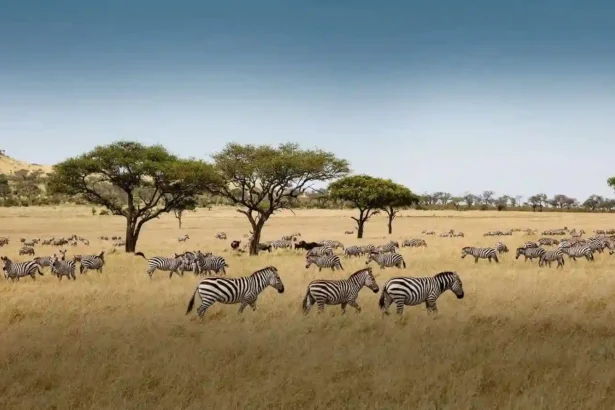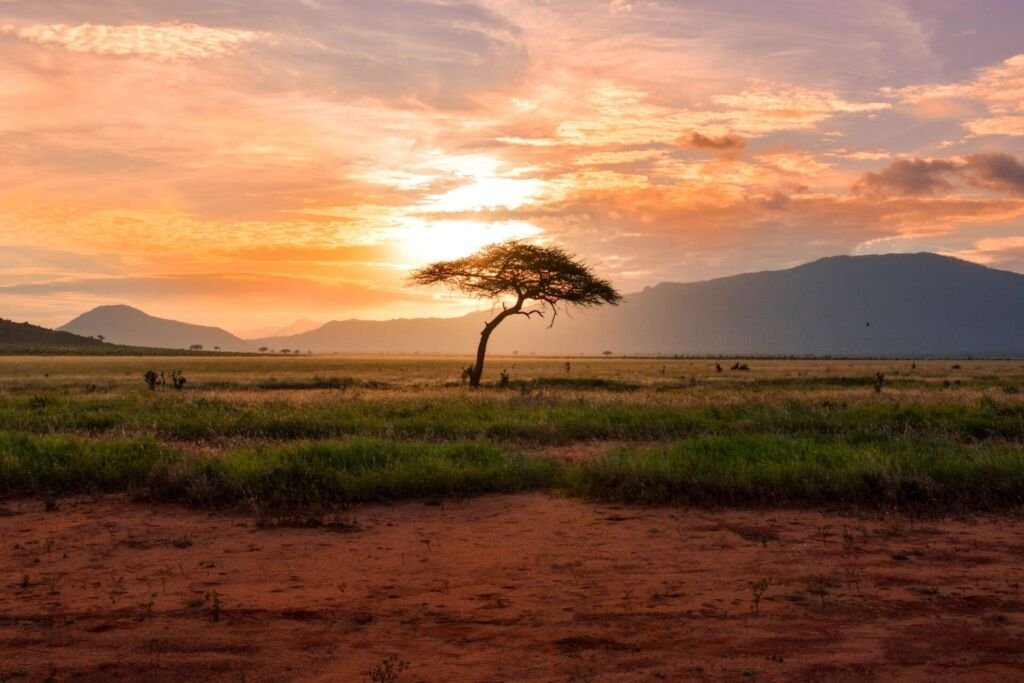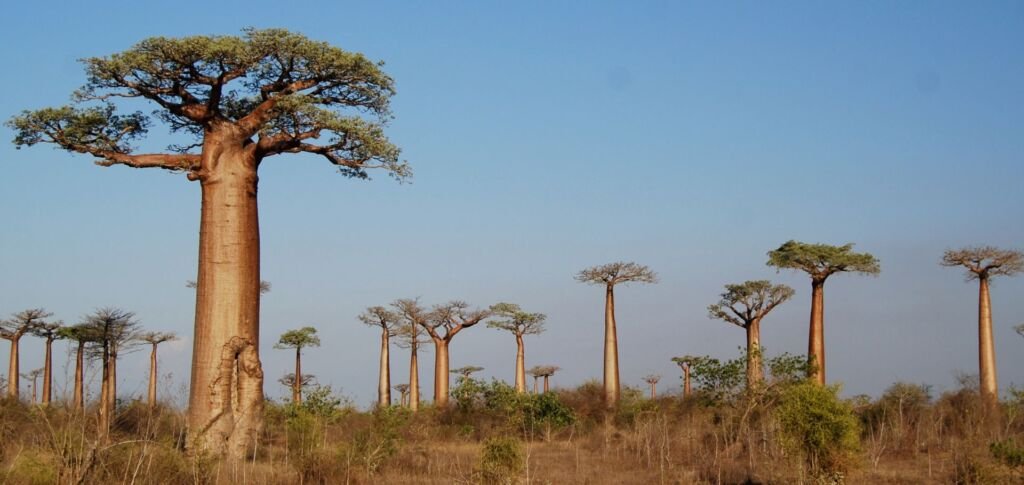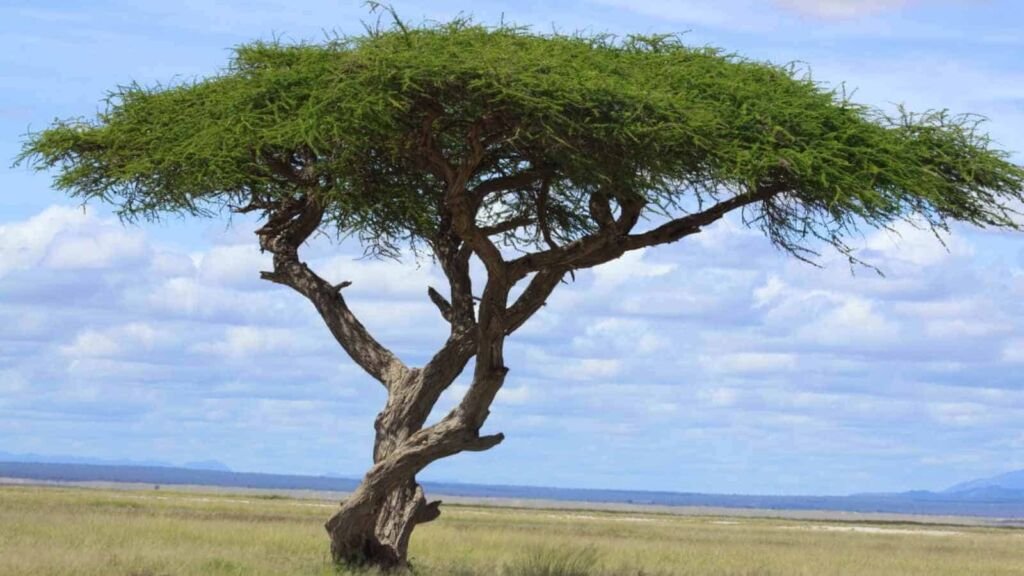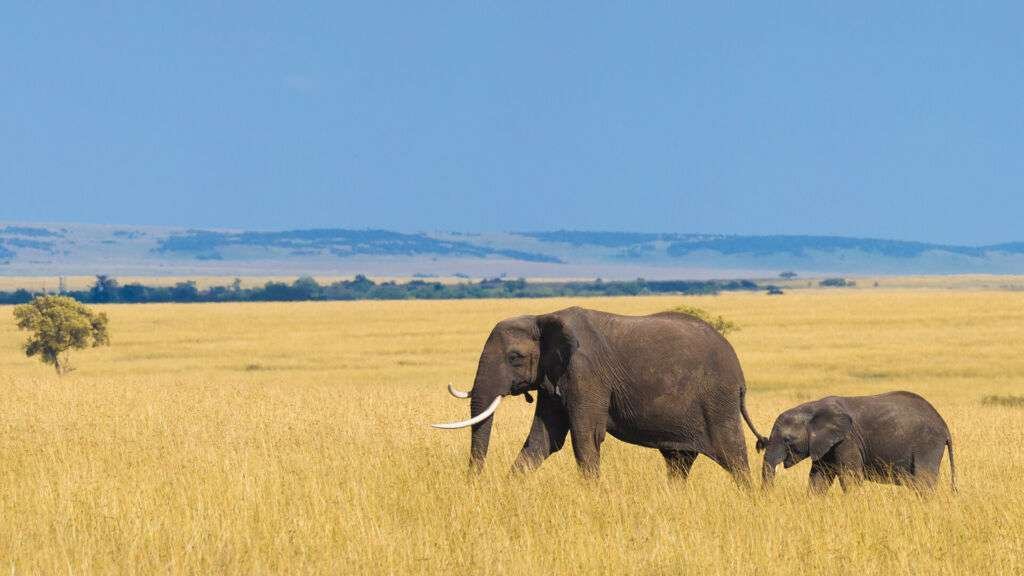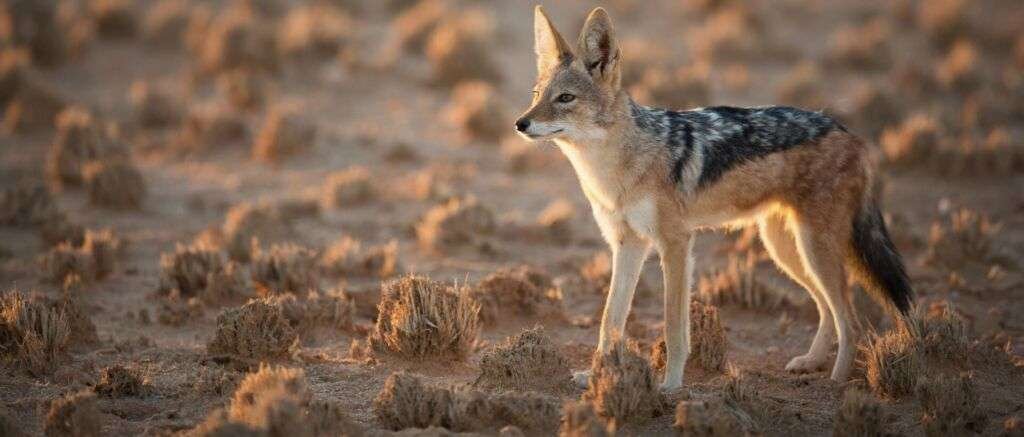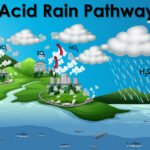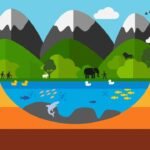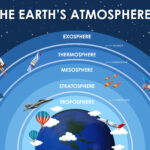The savanna food web teeters on a razor’s edge. Predators and prey engage in a constant struggle for survival, shaping the very landscape of this extraordinary environment.
⫸ Introduction to savanna
Imagine vast grasslands dotted with trees, stretching as far as the eye can see. Herds of zebras and wildebeest graze peacefully while elephants lumber through the landscape and watchful lions bask in the sun. This is the savanna, a unique and fascinating ecosystem found in the warmer regions of the world.
What is a Savanna?
● A Unique Biome
Savannas are transitional zones between dense forests and arid deserts. They have a distinct wet-dry climate pattern and support specific plant and animal life. These are the regions of tropical grasslands mixed with shrubs and woody plants. This unique, delicate biome has rich biodiversity and adds natural variation.
● Climate and Vegetation
Savannas experience warm temperatures year-round with distinct rainy and dry seasons. The vegetation is dominated by grasses, resilient to drought and fire. Scattered trees, such as acacia and baobab, have adapted to the savanna’s unique conditions.
Rainfall varies from 250-400mm in the desert part to around 1500-2000mm in the equatorial part. Temperature varies as per location.
● Where Are Savannas Found?
The Savanna biome lies between 10° – 20° latitudes in both hemispheres. The most famous savannas are in Africa, covering nearly half the continent. However, savannas exist worldwide in regions like South America, Central America, India, and Australia.
⫸Savanna Food Web - the predator-prey relationship
The Producers
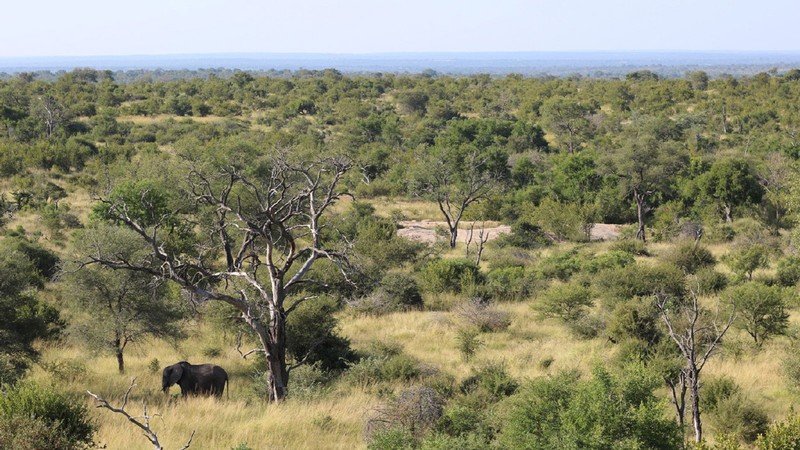
Like any ecosystem, the savanna food web begins with producers—plants harnessing the sun’s energy. Vegetation is found in three different layers in the savannas – i) coarse, hard grasses in the ground layer, ii) shrubs and small woody plants in the middle layers, and iii) savanna trees in the top or canopy layer. Whatever the type is, all are the producers of the savanna food web.
- Grasses: Savanna grasses are adapted to drought, fire, and grazing. Their deep roots and ability to grow quickly after disturbances make them the foundation of the savanna food web.
- Trees and Shrubs: These plants provide food and shelter, from iconic acacias to hardy shrubs. Their adaptations, like thorns or deep roots, help them survive the savanna’s challenges.
Primary Consumers of the Savanna
Herbivores form the next link in the savanna food web. The African savanna has the world’s largest number and greatest variety of grazing vertebrates, which have specialized teeth and digestive systems for their diets.
There is a close interlinking between the vertical stratification of the vegetation (producers) and the feeding habits of the animals (herbivores) of the savanna food web. Each species is uniquely adapted to the resources available:
- Zebras: Their stripes may offer camouflage, while their robust digestive systems process tough grasses.
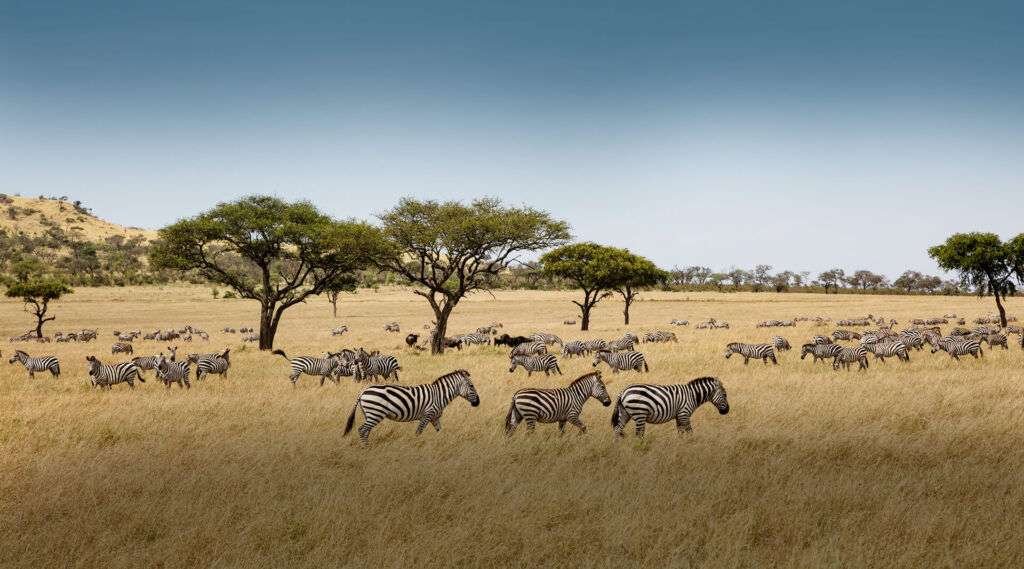
- Elephants: These giants are ecosystem engineers, toppling trees for food and altering the landscape.
- Giraffes: Their height grants them access to leaves that are out of reach for others. They mainly depend on the canopy layer.
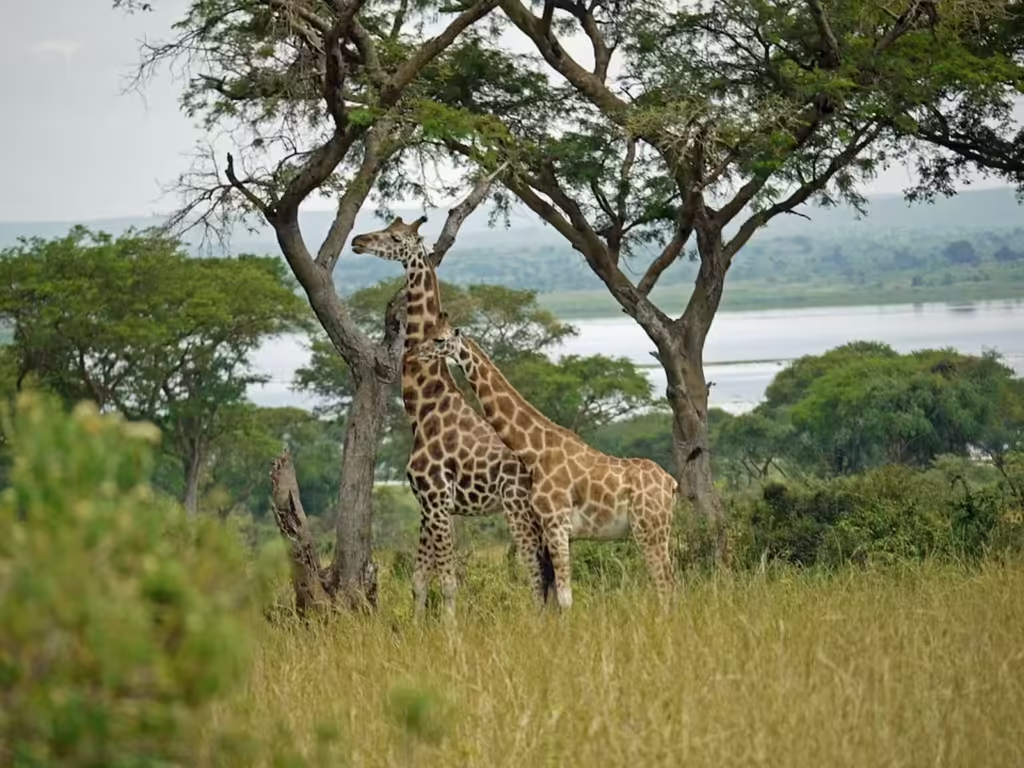
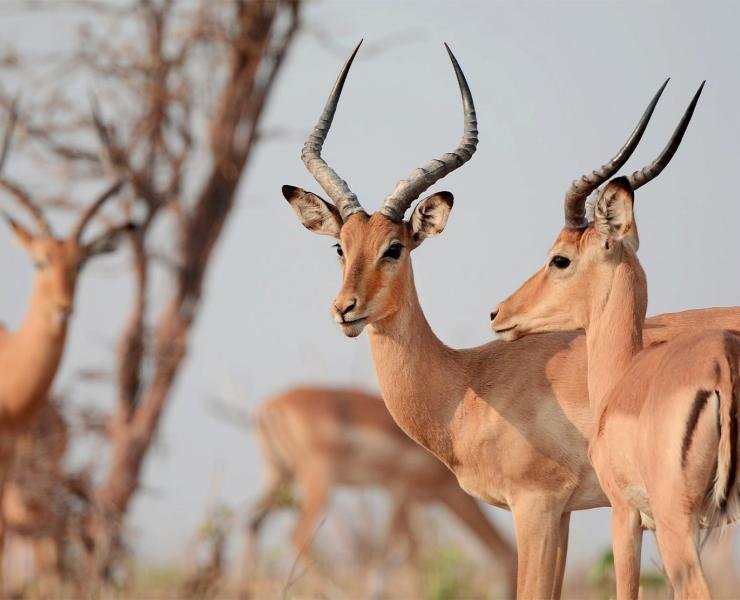
Savanna Predators: Maintaining Balance
The savanna’s predators are essential in regulating prey populations and keeping the ecosystem healthy.
- Big Cats: Lions rely on teamwork, leopards on stealth, and cheetahs on their incredible speed.
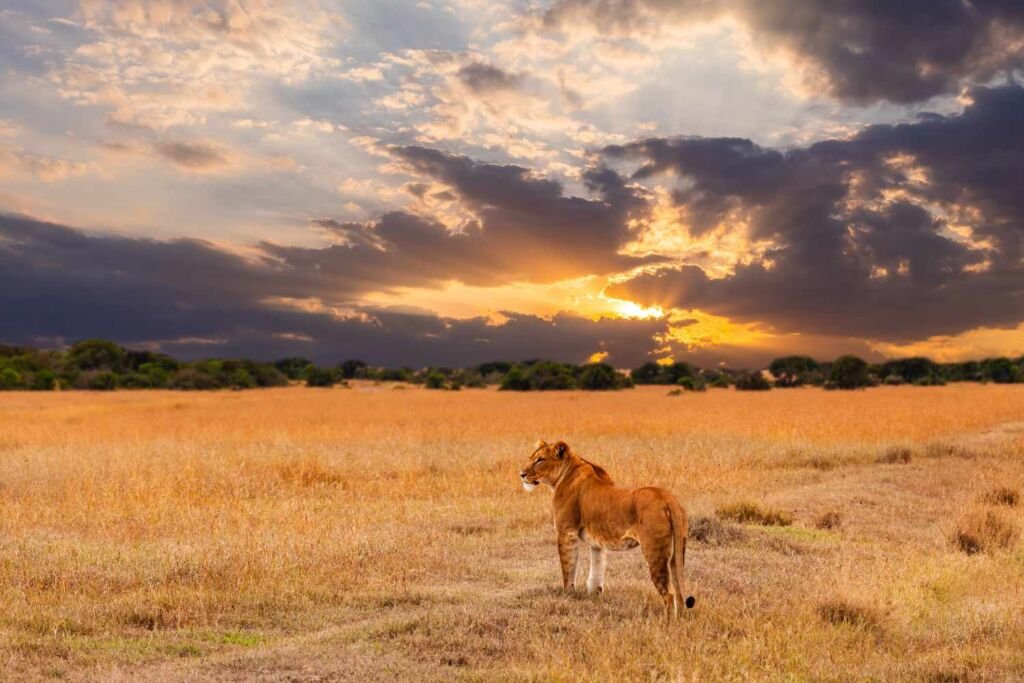
- Hyenas: Often portrayed as scavengers, hyenas are also skilled hunters.
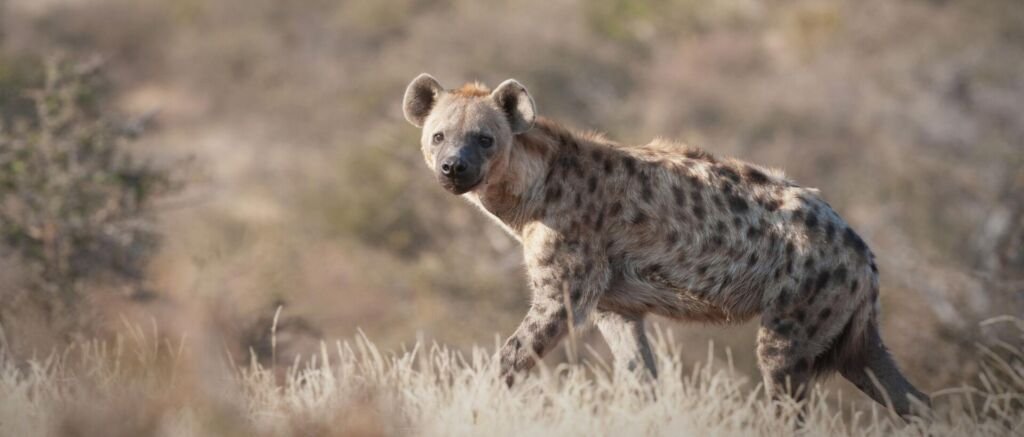
- Other Carnivores: Jackals and wild dogs are opportunistic and adaptable predators.
Scavengers and Decomposers: Cleaning Up the Ecosystem
No food web is complete without the clean-up crew – these creatures help recycle nutrients back into the ecosystem.
- Insects like termites, beetles, and other insects are vital in breaking down waste and becoming food for other creatures.
- Vultures: With superb eyesight and powerful beaks, they make short work of carcasses.
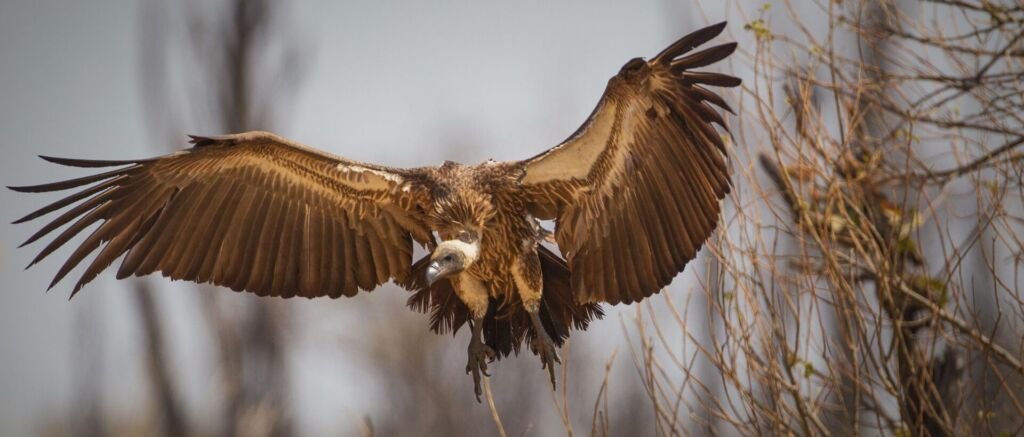
- Bacteria and Fungi: These microscopic decomposers are the final link, breaking down the remains of plants and animals into usable nutrients.
⫸ Threats to the Savanna Food Web
Human activities
- Habitat loss: Conversion of savannas to farmland or urban areas destroys vital plant and animal habitats.
- Overgrazing: Excessive grazing by livestock can deplete grasses and shrubs, disrupting the savanna food web.
- Poaching: Illegal hunting of herbivores and predators disrupts the ecosystem’s natural balance.
- Clearing of grassland: Large parts of savanna grasslands, both the tough grasses and the trees, are cleared regularly. This results in the thinning and partial collapse of this fragile ecosystem.
Climate change
- Altered rainfall: Droughts and unpredictable rain patterns due to climate change stress plants and animals.
- Wildfires: More frequent and intense fires can devastate vegetation and wildlife populations.
Invasive species
Introduced plants and animals can compete with native species for resources and disrupt the food web.
⫸ Conservation: Protecting the Savanna Ecosystem
Sustainable Practices
- Responsible grazing: Prevents overgrazing and soil damage.
- Fire management: Uses controlled burns to mimic natural patterns.
- Combating invasive species: Maintains native plant diversity.
Wildlife Reserves and Protected Areas
- Provide undisturbed habitat for all food web members.
- Limit poaching and illegal wildlife trade.
- Support research and education for long-term conservation.

⫸ Conclusion
The savanna food web is a marvel of interconnectedness. Every organism plays a crucial role, from the grasses that fuel the grazers to the predators that maintain populations. This delicate balance is vulnerable – changes at one level ripple throughout the system. Human actions and the looming threat of climate change demand urgent action to protect this remarkable ecosystem.

